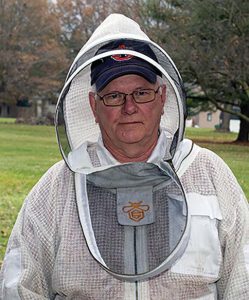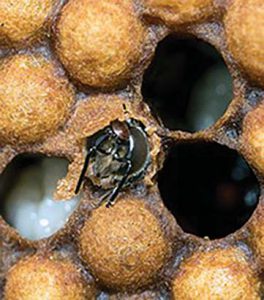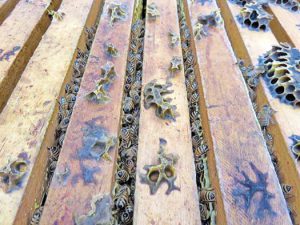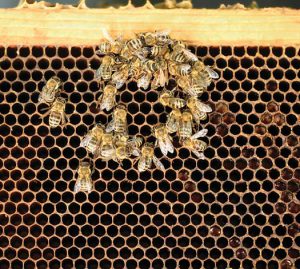Author: James E. Tew
 The year was 1964
The year was 1964
I was 16. My grandparents were alive and well and lived on the family farm. Life was good.
On that Alabama warm Autumn day, I walked a fence line separating one of my grandfather’s fields and a forestry plot. During the previous years, I had picked up arrow points in this area. The chances were slim that I would find another. Still, I casually glanced around the area – just in case one showed itself. It didn’t.
Without warning, I began to have thoughts and questions that were beyond my years. I was two years from high school graduation and knew a life’s transition was looming. My life would not always be this way. The 60s were just getting fired up.
Being the oldest son and grandson, no one in my family had college experience. Should I do that? Maybe continue to work at my father’s paint supply company. Maybe try to farm the land on which I was walking. Then there was always the military. What should I do about that?
Without warning, I abruptly asked my 16-year-old self when I would leave this dimension. Boom! No warning. The question was just suddenly there. I had just asked myself, as young as I was, what year did I think I would leave this world? Now, that’s heavy.

About 55 years ago my grandparents parked, on a different day, at the spot where I had my talk with myself. The field was to my back while the tree line is in the background. My two younger brothers and I used that 1952 Dodge ½T pickup to learn to drive. Three gears on the column. Flathead six engine. Floor starter switch. My younger brother restored it and still has it. I was the photographer. I love this snapshot.
Obviously, I had to put some thought into the matter. For a 16-year-old, this was a serious estimate. In 1964, the year 2020 had a futuristic ring to it. Like Rin Tin Tin, 20-20 just had a sound to it. (If you know Rinnie, that dates you. For those who don’t Rin Tin Tin, look him up. Google knows.) The advantages to that year were that the numbers melodiously rolled from my tongue, and it was so far in the future as to seem that it would never become the present. Ergo, I felt that year should be my year. It just felt right. Now… Hold the phone. In a stunningly short time, 56 years have passed. It’s 2020! My big year is here.
You need to know that my plans have profoundly changed. That 2020 thing is off the table! Why do I even still have this odd 56-year-old memory? It’s crazy that I still recall this youthful philosophical episode so well. What have I done to myself? You must know that I will be a bit skittish all this year. But here I am, ready for another year of controlling varroa and managing bees. As I have done for so many recent years, I need to get my packages ordered. As I start another decade, I have a few thoughts that I have presented below.
We have evolved to become mite managers who also keep bees
I don’t think this is news to most of you. We need to keep our bees healthy in order for us to suppress our Varroa populations as the season progresses. In 2020, as before, we start next Spring managing mites. If there is no Varroa suppression program – there will be no successful bees. Essentially, we are Varroa managers first and foremost (Or we should be), and yes, that is a weird aspect of 2020 beekeeping. It’s been about 35 years coming.
Years ago, I accepted the reality of permanent Varroa infestations, but in my heart, I have always clung to the notion that – someday, someway – honey bees and we, their keepers, could figure something out to push these pests out of our bee lives and our hives. I suspect I have been resistant to totally accepting the invasive pest because I still remember bees without Varroa and tracheal mites. In 1971, Mite-less bees were my introduction to beekeeping.
No, I am not daft. Others may argue that point. I know the mites are here for the long haul, but it’s that memory of mite-free bees that I suppress, but one that I cannot kill. It’s always there – lurking. Ask any pre-mite beekeeper. They feel it, too. But be aware that, all those years ago, beekeepers had other problems – toxic bee-killing pesticides, low imported honey prices, societal resistance to bees. We had problems, but we did not have mite problems. We did not have mites.
New beekeepers and mites
The old days are gone. The new days of 2020 are here. What follows is a slippery slope. The failure of new beekeepers coming to beekeeping and staying in bees has made me accept this factual mite reality without involving old emotions of my heart. I was recently given some valuable numbers from a large beekeeping club concerning their popular “Introduction to Beekeeping” class. This intro class always fills, and there is a wait list. Here’s the rub. Two years after completing this class, 80% of the new keepers will have left the beekeeping fold. I feel that it is primarily the effects of Varroa, but I have not a shred of data – only my conjecture. But I also accept that there are other issues in play that may disenchant a tyro beekeeper.
While I am not the oldest beekeeper around the apiary, I have been in hives for about 46 years. That gives me a lot of experience, but over time, experience ages and becomes obsolete. If beekeepers, like me, do not continue to produce new experiences, we become something akin to a 1964 Chevy, interestingly quaint but really old. From my understandings, I can say that through the passing years, beekeeper numbers have always waxed and waned.
Six decades ago, organophosphate pesticides did not help our bees. A few decades later, Killer Bees – scared beekeepers and the public to the point of bee avoidance. Beekeeper numbers dropped. But, at some point, beekeeper numbers went back up. Thankfully, they always have. Before my time, there was no control for American foulbrood, except burn the infected hive equipment. During my early years, we could freely use antibiotics with abandon, but now Terramycin has been made essentially unavailable to most beekeepers. (I must agree with this restriction for smaller scale beekeepers.) Now, once again, we just burn infected equipment. The same has happened with Nosema control. We once had fumagillin, but now we don’t. (I’ve heard a rumor that could change in the future. Only a rumor.)
Beekeeping’s golden age. Bah humbug.
It’s a good time to say that since U.S. beekeeping started, there has never been a perfect period for which we all yearn to return. Since it was initiated in this country, our craft has always been evolving. We started with gums and box hives until the evolution and development of the beautiful equipment that we now have.
Varroa, beekeeping’s unruly friend
Without Varroa hypothetically eating our bees and causing such a public outcry, I really doubt that we would have had this current sustained interest in all things beekeeping.1 In all our apicultural history, we have never had an interest bump like the one we are in now. Thank you varroa, but could you tone it down just a little?
Over time, my opinion will change, but for now, I feel that from the get-go, if one is unable or unwilling to control Varroa, their bees cannot ultimately succeed from season to season. Controlling mites must be accomplished as both new and established beekeepers manage their bees in other traditional ways. While other tasks must be performed, without some kind of mite control program, all other bee management procedures will be (mostly) folly.2
I hate to write this, but I admit that I am challenged when trying to accomplish Sisyphean mite control tasks that are endless. We have to do something to suppress mites every year. Every year. I am reminded of several occasions when some aspect of computerization was added to beekeeping or presented at a meeting, an older keeper would say, “I came here to learn about bees, not about some computer trick.” A variation of this concern could be, “I came here to learn about bees, not mites!” And this beekeeping craft thing is fun – right? Oddly, it surely is.
I can’t explain this.
I would estimate that at more than 90% of the discussions that I present on the topic of mites and their control, usually someone will offer a comment much like this: “They have kept bees for some number of long years and their bees have never been treated”. I listen politely. I believe them. But I do not know how the bees or the beekeeper routinely accomplish this feat. Each encounter is slightly different.
Are these beekeepers and their bees on borrowed time? Is there some environmental thing about their apiary location? Are their bees isolated? I don’t know. Everything is in the story’s details, but I can say this – there is no way that I can offer a general recommendation to other beekeepers based on this information. Most of us – by far – will be managing dead bees if such compassionate neglect is our control program – well, for sure that would be my bees ignominious end.
Now, enter the new beekeeper. What are they to do? What should we tell these new keepers when they ask what methods to use for mite control? How should we reassure them? When it comes to mite control, I sense that we all could use some mentoring.
Apiary skies will not always be blue
All days in the apiary are not happy days. To truly know a good apiary day, one must have some “ungood” apiary days. The swarms that got away. The new queen that has been disappointing. Not a good nectar flow and the beekeeper will mostly like have to feed the bees.
But to counter these frustrating points, there are some good opposites. You hived the new swarm; the purchased queen was a good one and the flow was strong and long. Then there is Varroa – always lurking. Always building up populations. Always scheming to take all the “good opposites” away. It’s the 2020 bee manage way.
When should the new beekeeper be introduced to this mite pest certainty? When should they be told that some “ungood” days will coming to their apiary? In many cases, Varroa mites will be leading that charge.
Unload on the new beekeeper at the end of the class?
Normally, the bad news of bee diseases is held until near the end of a beekeeping class. I have done this time and time again. It’s common. But honestly, it’s somewhat of a duck-and-run for instructors to completely hold this dark discussion until last.
Wow! To present the total load of Varroa complexities to people who are still trying to distinguish shallow supers from inner covers. Coming on that strongly would scorch the hair on these new people. What’s to be done? Don’t they need to know something bad this way comes? Yes, but it’s complicated.
Now, I’ve asked a question I can’t readily answer.
One of my points for this article is that during my 46-year run in beekeeping, the craft and the beekeepers coming into our craft have changed. With the ravages of Varroa being practically assured, how should instructors introduce the myriad new beekeepers to this pest? We must not frighten all these new people, but they must know that mite management and bee management are nearly equal.
True, for reasons other than predaceous mites, many new beekeepers try bee husbandry and drop out. That is not unique to our present time. New beekeepers have always come to our craft only to quietly leave a few to many years later. I once was a hot-shot water skier. I’m finished with that hobby and have not a piece of water ski equipment left. No interest. I suspect all of us have dropped something we once enjoyed. Beekeeping is not exempted. Even so, we’ll always have the memories. (Modified from the musical classic, “We’ll always have the moon.”)
I try to offer strategic hints in my presentation or intro class as it moves along. I, also, try to offer practical reassurances that this mite thing is a hurdle that most of us cannot avoid. In all reality, I doubt that any of these new, bee-interested people would even be considering a run with beekeeping had it not been for the media coverage about how beekeeping is under serious stress. In all things bad in beekeeping, be gentle when the news is delivered. Even now, I can’t say that I just offered you the correct introduction procedure for this dour topic. What works for you? What works for your audience?
To the uninitiated beekeepers who might be reading.
The main points of beekeeping are still solid. Bees pollinate, produce honey and provide rewarding biological studies. Some seasons are better than others. Varroa is a hurdle, but one that the industry and its scientists have developed control protocols for use as combat tools when encountering mite challenges. In our own way and in our own time, we are surviving quite well – even with our present pest challenges. It’s what we do. We are modern beekeepers of the 2020s. We manage bees and mites.
I’m going to take a shot at this. It may or may not work.
All – and I mean all – of my woodworking magazines feature equipment review sections. I rarely have done this in my Bee Culture pieces unless the reviewed equipment was pertinent to my article’s flow. So occasionally, I plan to present simple reviews of selected equipment – sometimes new while at other times, not so new.
I have several suits, but one I have used extensively the past two Summers. It is a suit from Guardian Bee Apparel3. I really like the feature of being able to zip the veil open without removing it. I will give a fuller discussion when I review my “seasonal” bee suits next month.
If this equipment review concept doesn’t work well, it will go away.
If you’re at this point
If you’ve read to this point, I deeply thank you. I hope you’re around next month for another visit.











